Camille Bleker & Luna Pittau
Carole Louis
What the Flag?!
Gilles Hellemans
Marine Kaiser
Ali Glover
Eva Giolo
Angyvir Padilla
Chloé Malcotti
Socles (Cléo Totti and Alain de Clerck)
Francisca Markus
Le Corridor
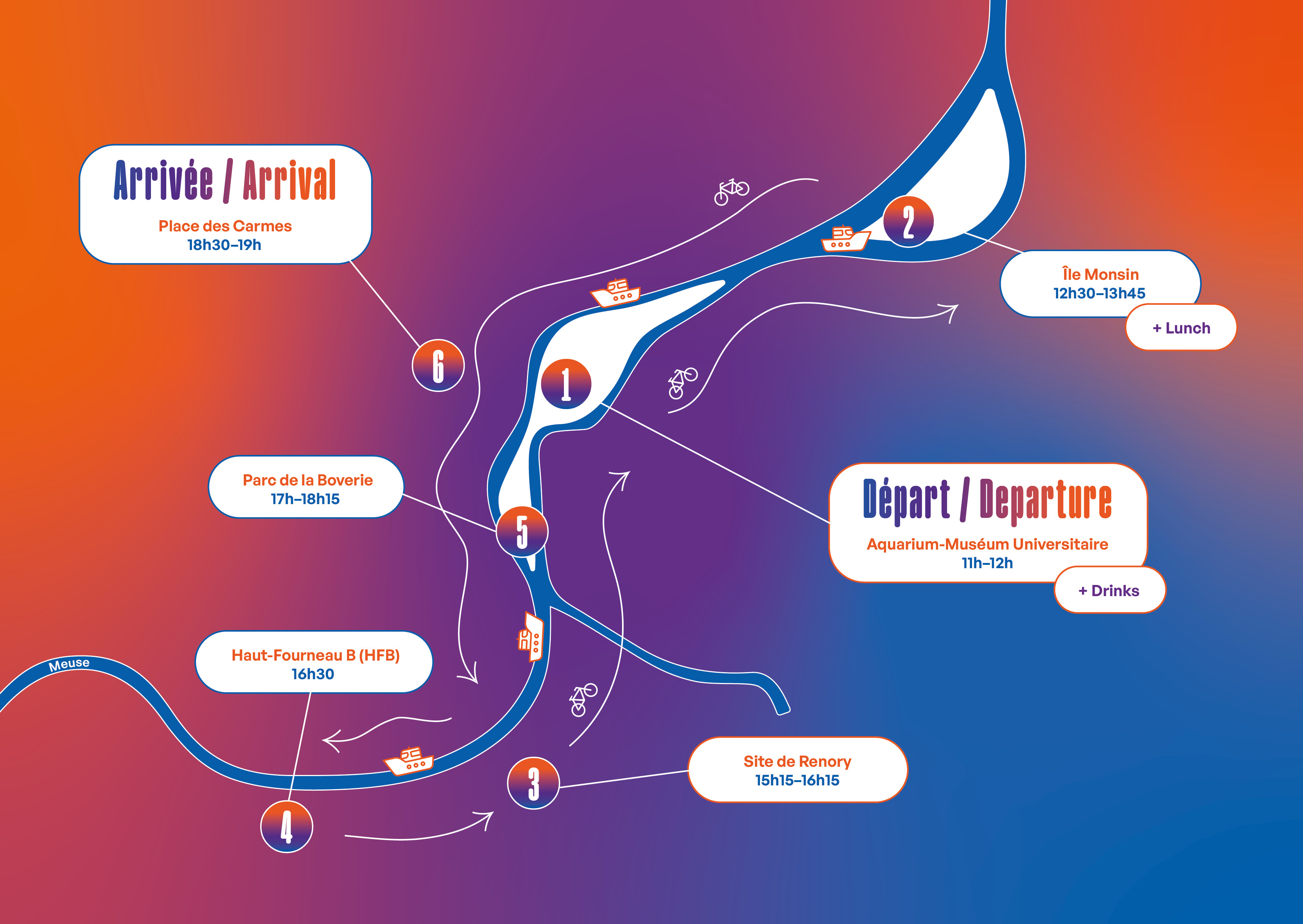
Performance & video.
14:00
17:00
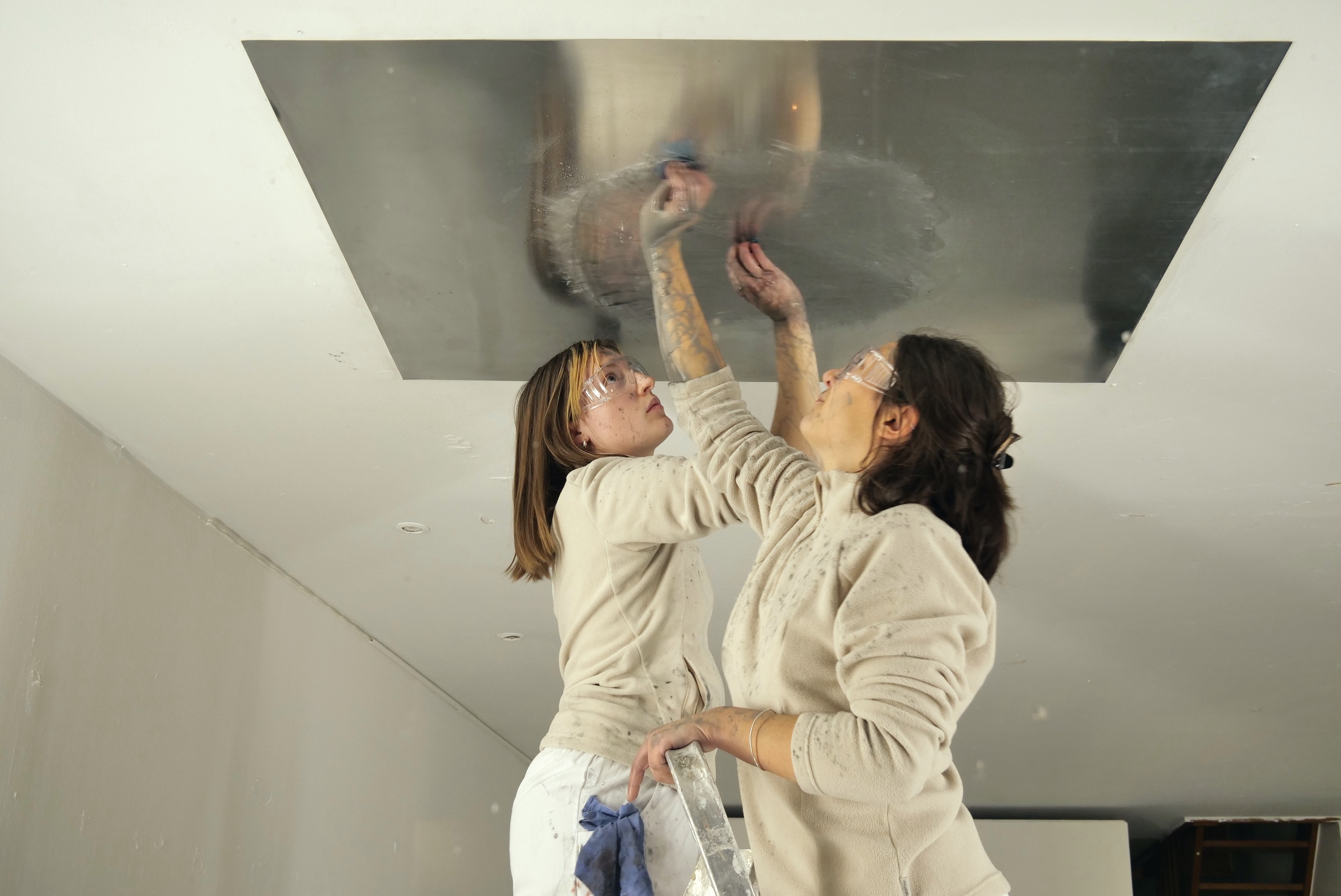
“Deux Quarante” by Luna Pittau and Camille Bleker follows the course of the Meuse River and commemorates its last major flood. On July 14, 2021, an unprecedented height of 62.46 meters was recorded by station 7102 LIEGE of the Walloon hydrometric monitoring network. The measurement recorded on the same date in other years is around 60 meters, which is approximately 2.40 meters below this exceptional level. This difference in level caused disastrous floods and transformed the landscape of the whole region, and gives both the dimension of the processual artwork and its title.

Luna Pittau and Camille Bleker create together performances that question the spaces that surround us and the places we inhabit. Their actions expose the work of two bodies collaborating, operating and diverting a set of repetitive gestures that act on materiality and are inscribed in time. Existing contextual elements determine the elaboration of their projects, testifying to their shared experience of reuse in the construction field. They progressively transform space and reveal the making of new objects, questioning our relationship to place, time and memory.
Luna Pittau and Camille Bleker create together performances that question the spaces that surround us and the places we inhabit. Their actions expose the work of two bodies collaborating, operating and diverting a set of repetitive gestures that act on materiality and are inscribed in time. Existing contextual elements determine the elaboration of their projects, testifying to their shared experience of reuse in the construction field. They progressively transform space and reveal the making of new objects, questioning our relationship to place, time and memory.
Performance. With the support of Marilou Guyon.
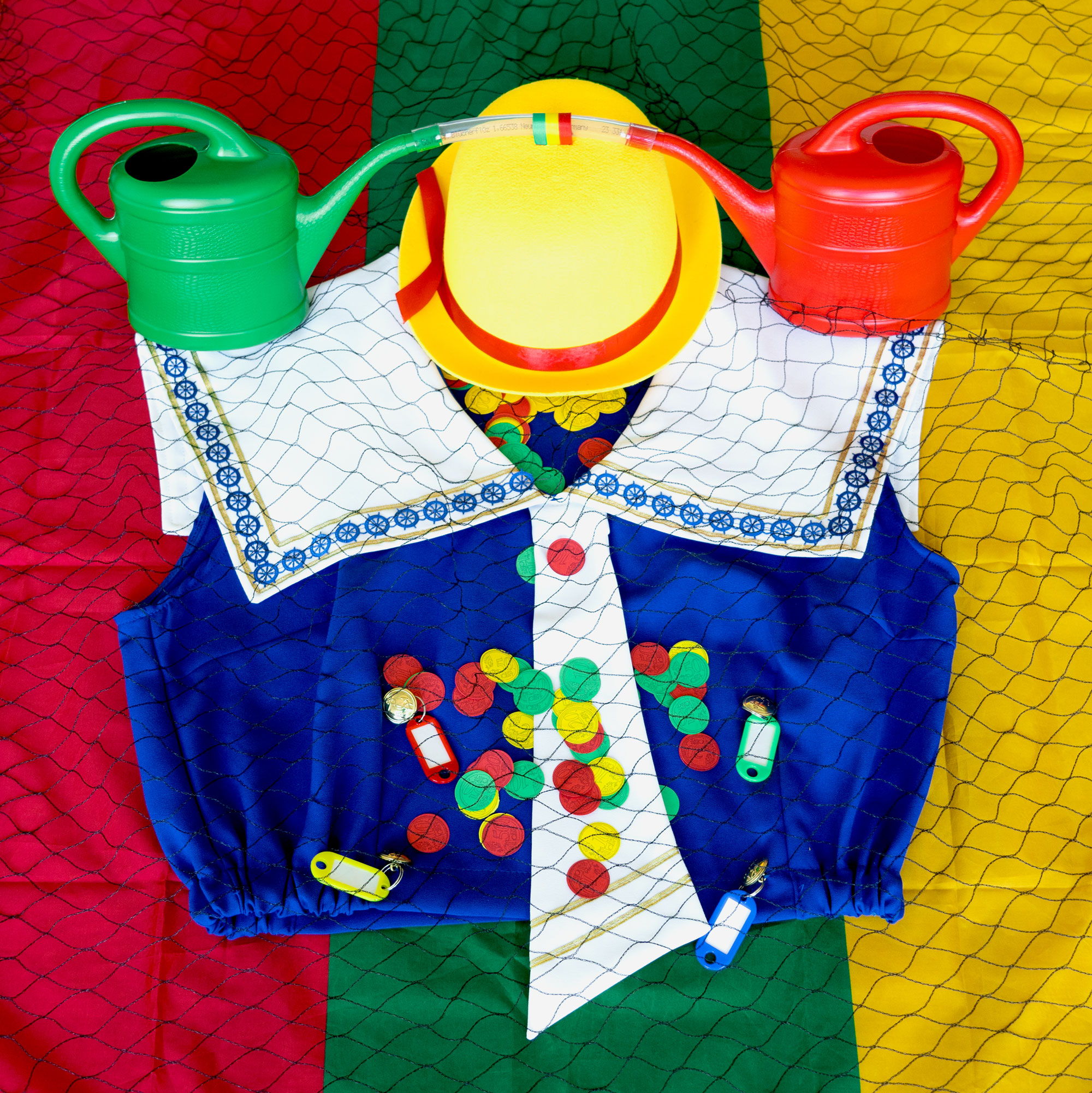
Drawing its inspiration from the “Büttenrede”, speeches from the carnival tradition of Limburg (NL), Carole Louis’ performance transposes the grotesque criticism inherited from folklore into an amibuous tour, resembling a real estate or tourist visit. Carole Louis creates a dystopian, caustic and absurd fable to explore the history and current affairs of the Liège région. And then, who knows? Maybe the only heritage left for us to visit tomorrow will be that of our shrewd real estate investments!

Carole Louis (1985 Köln, Germany) is a belgian artist based in Brussels. She graduated in sculpture at the visual arts school La Cambre. In her artistic practice, she combines different media to produce a global context, which are often activated through performance. Her tragicomic vision plays on the absurd and the misunderstanding to question value systems, hierarchies, and economy. By exaggerating the literality of certain phenomena, or starting from an ingenuous point of view, she casts doubt in our mind and has fun distilling counterpoints to deterministic situations.
Carole Louis (1985 Köln, Germany) is a belgian artist based in Brussels. She graduated in sculpture at the visual arts school La Cambre. In her artistic practice, she combines different media to produce a global context, which are often activated through performance. Her tragicomic vision plays on the absurd and the misunderstanding to question value systems, hierarchies, and economy. By exaggerating the literality of certain phenomena, or starting from an ingenuous point of view, she casts doubt in our mind and has fun distilling counterpoints to deterministic situations.
Exhibition

What the Flag!? is a project introduced by Greylight project in Heerlen and shared with Very Contemporary in terms of exchange between the different institutions. At the occasion of Performing Landscapes, we are gathering and presenting a collection of flags produced during the last years, hosting them in different locations along our path.
Flags are commonly used to transmit signals, to identify countries, regions or cities, or to visually demarcate a territory. Flags are also frequently used to represent political ideas and beliefs. The artists are invited to respond from their own work and vision of the medium “flag” within the context of the location in which they are shown.

Quai van Beneden:
Mikail Koçak, Hannes Fleckstein, Mike Moonen, Anne Neukamp, Vera Molnar, Jody Korbach, Rem Koolhaas, Silke Schatz, Claude Horstmann, Luuk Smits
Île Monsin:
Tom Bogaert, Mark Gonzales, Amit Goffer, Athanasia Vidali, Silke Schatz, Josephine Kaeppelin, Elodie Moreau, Philippe Herbet, Jean-Michel Crapan, Fran Hoebergen, Monty van Richthofen, Alexis Gauthier, Francis Feidler, Vera Drebusch, Paul Koppers, Myriam Hornard, Céline Vahsen
Quai van Beneden:
Mikail Koçak, Hannes Fleckstein, Mike Moonen, Anne Neukamp, Vera Molnar, Jody Korbach, Rem Koolhaas, Silke Schatz, Claude Horstmann, Luuk Smits
Île Monsin:
Tom Bogaert, Mark Gonzales, Amit Goffer, Athanasia Vidali, Silke Schatz, Josephine Kaeppelin, Elodie Moreau, Philippe Herbet, Jean-Michel Crapan, Fran Hoebergen, Monty van Richthofen, Alexis Gauthier, Francis Feidler, Vera Drebusch, Paul Koppers, Myriam Hornard, Céline Vahsen
Sound installation and Performance, 30 min
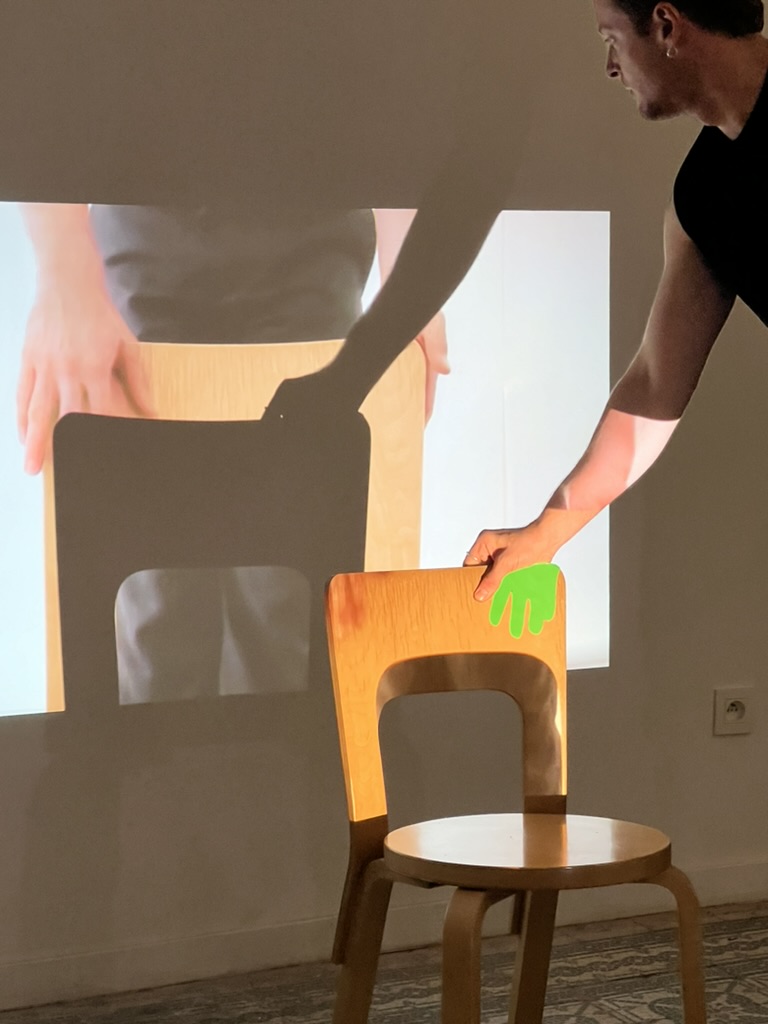
A conversation opens up between the artist, the audience and the architecture; first through sound and then through a voice embodying three characters. Each of them brings a unique and poetic point of view to bear on the ever-changing urban landscape that surrounds us, its possible narratives, its imaginary and its impact on our lifestyles. Time and space are broken down, intersecting what was and future potentials; or in reverse passed potentials and memories to come. It’s no longer a question of place but of dimensions, experimentations and standardization. Gilles Hellemans invites us to explore through his gaze our position as "users" of public spaces, reconsidering the reciprocity in the relationship between the bodies and the structure they inhabit.

Gilles Hellemans (BE, 1996) immerses himself in his surroundings, whether it’s an architectural element, a piece of furniture, or a part of an urban landscape that draws him in. Through the intuitive methodology of “Always Stuff,” he gets closer by observing, being with, and becoming part of these seductive structures.
Gilles Hellemans (BE, 1996) immerses himself in his surroundings, whether it’s an architectural element, a piece of furniture, or a part of an urban landscape that draws him in. Through the intuitive methodology of “Always Stuff,” he gets closer by observing, being with, and becoming part of these seductive structures.
Performance, 10min.
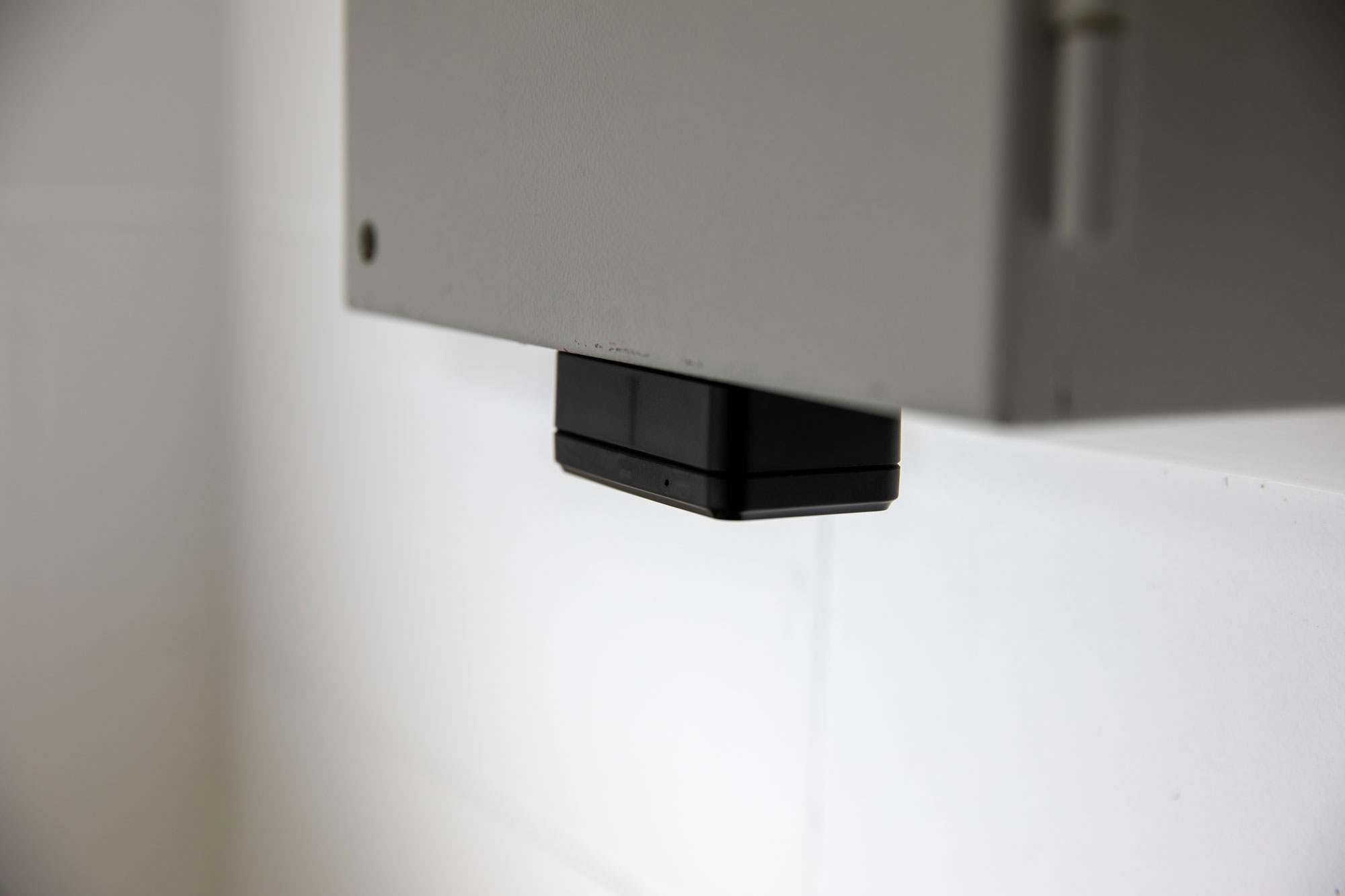
Inspired by the official speech delivered by King Albert I at the launch of the canal's construction in May 1930, Marine Kaiser shifts our attention to question the legacy of our relationship with the living. With a new speech, addressed to the public and the memorial, Marine Kaiser inaugurates a new paradigm, integrating the non-human to our present and future. A simple request to let the ifs take on their own forms by stopping pruning them. To deconstruct an absurd and futile system of domination over our environment, by integrating it into the work of remembrance, into our actuality and into our future challenges.

Marine Kaiser (CH / FR, 1992) is an artist based in Brussels. She investigates the roots of our contemporary landscapes through research into the construction of the West and its legacies. After obtaining a Bachelor's degree from HEAD Geneva and a Master's degree from erg Brussels, she completed her training with a residency at the Jan van Eyck Academie Maastricht. Her work has been shown at Border Buda Brussels, Krone Couronne Biel, Bureau Europa Maastricht, Espace Contact Neuchâtel, Les Brasseurs Liège, Le 18 Marrakech, Kanal - Centre Pompidou Brussels.
Marine Kaiser (CH / FR, 1992) is an artist based in Brussels. She investigates the roots of our contemporary landscapes through research into the construction of the West and its legacies. After obtaining a Bachelor's degree from HEAD Geneva and a Master's degree from erg Brussels, she completed her training with a residency at the Jan van Eyck Academie Maastricht. Her work has been shown at Border Buda Brussels, Krone Couronne Biel, Bureau Europa Maastricht, Espace Contact Neuchâtel, Les Brasseurs Liège, Le 18 Marrakech, Kanal - Centre Pompidou Brussels.
Sound piece and in situ installation.
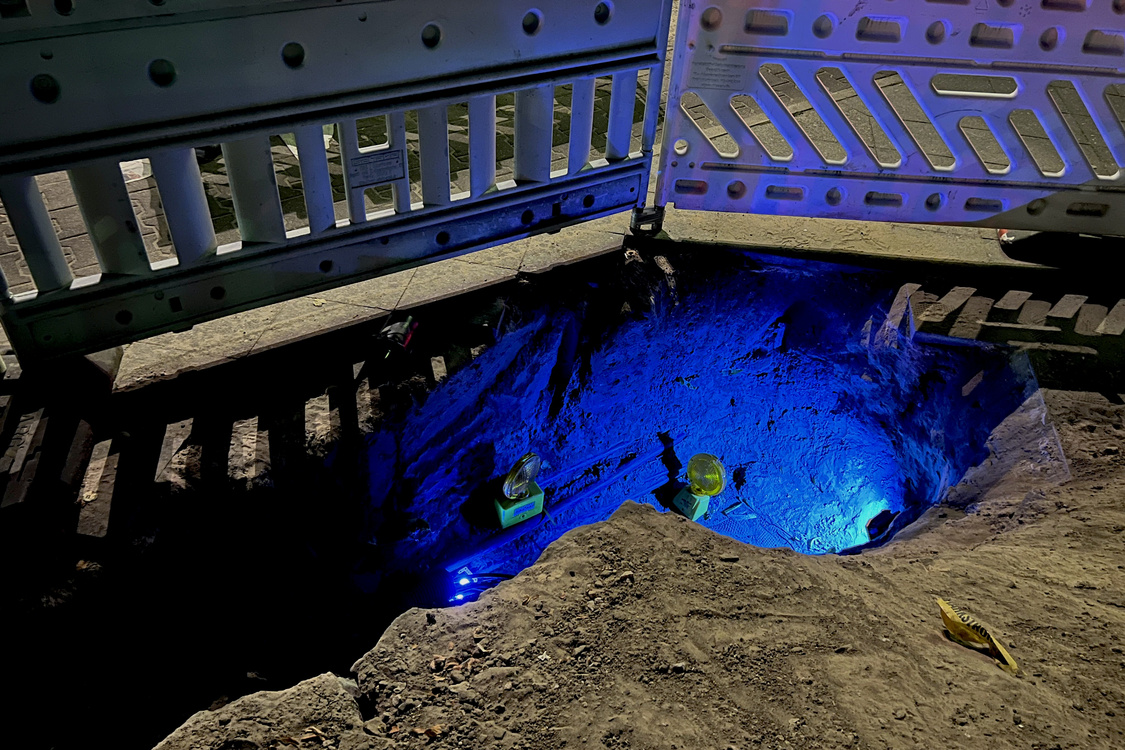
For Performing Landscapes, Ali Glover looked at the idea of the parade and marching bands which have featured prominently whilst around the region of his residency in Heerlen. The marching band has a history of being linked to the military, bringing order within the city by providing a beat for everyone to step in unison. They provided a rhythm and sound that composes the body into a larger disciplinary system. What represent marching now?
Ali Glover’s sound piece explores Liège’s urban fabric, how its industrial history still has affects today and works in close knit with its seemingly never ending redevelopment. Is it building a porous environment that allows for frictions that should between people of all backgrounds? Or is it seemingly building a smooth city, one that is disguised in controlled frictions that on the surface show welcoming of difference but yet is still top heavy? The sounds in “(Off) Kilter” all come from found footage and captured moments of marching bands and other moments in Liege, Maastricht and Heerlen in 2024.

London based artistAli Glover (b. 1993 West Midlands) graduated from Chelsea College of Art in 2015 and completed the MFA Fine Art programme at Goldsmiths in 2022. Glover’s site-based interventions consider how architectural infrastructures can shift aspects of behaviour and psychological patterns. He is interested in how forms of language (architectural, image or sonic) used in those in-between moments can lead to something from being overlooked to visible. Glover explores notions of hauntings within urban environments, this brought him to consider monotonous and cyclical elements of time in his practice and research. He borrows moments of other forms within his interventions that allow markers in time to be made with an aim of collapsing them simultaneously. Politics of daydreaming are articulated through field recordings questioning area’s of productivity and boredom.
Image: “Some Dust”, 2022 – For the curatorial project “A Place to Rest” by Jean Watt situated in Turmstraße, Berlin
London based artistAli Glover (b. 1993 West Midlands) graduated from Chelsea College of Art in 2015 and completed the MFA Fine Art programme at Goldsmiths in 2022. Glover’s site-based interventions consider how architectural infrastructures can shift aspects of behaviour and psychological patterns. He is interested in how forms of language (architectural, image or sonic) used in those in-between moments can lead to something from being overlooked to visible. Glover explores notions of hauntings within urban environments, this brought him to consider monotonous and cyclical elements of time in his practice and research. He borrows moments of other forms within his interventions that allow markers in time to be made with an aim of collapsing them simultaneously. Politics of daydreaming are articulated through field recordings questioning area’s of productivity and boredom.
Image: “Some Dust”, 2022 – For the curatorial project “A Place to Rest” by Jean Watt situated in Turmstraße, Berlin
16mm Scanned to digital file, color, 4:3, stereo, CA/BE, 20min
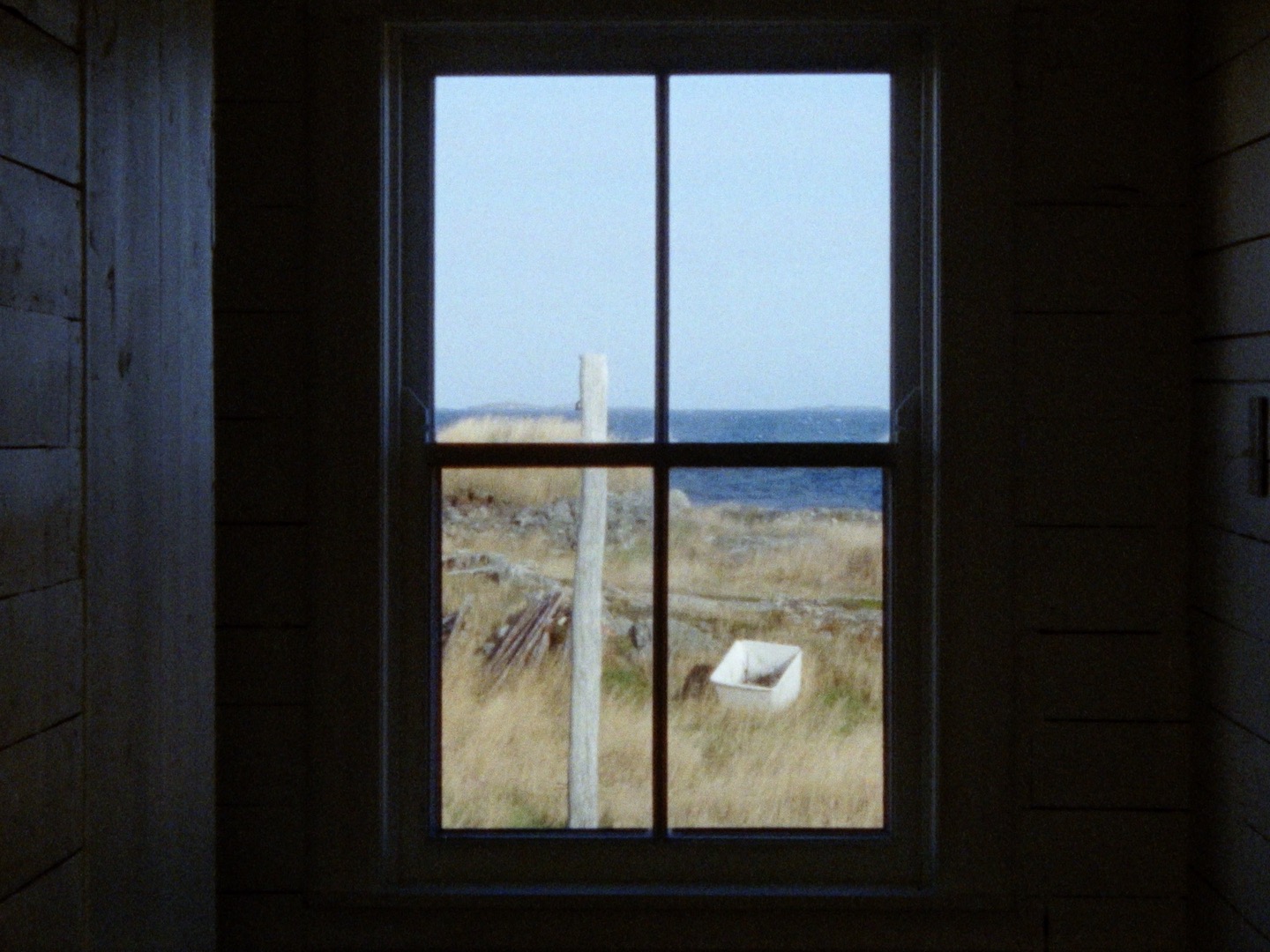
A lyrical portrait of Fogo Island in Canada, “Becoming Landscape” re-situates the viewer in nature, in the activity of watching and waiting, as we meditate on the relationships between our bodies and the landscape, dreaming andlooking, consciousness and the circular rhythm of time.

Eva Giolo (1991, BE – Living in Brussels) is an artist working in film, video, and installation. Her work places particular focus on the female experience, employing experimental and documentary strategies to explore themes of intimacy, permanence and memory, along with the analysis of language and semiotics.Her work consists of cinematic poems that show a proclivity for capturing family histories-her own or those of others. Using documentary strategies, she paints filmic portraits and creates a window on invisible, usually private, inner worlds. Her interest lies in capturing moments of everyday life, analysing the birth of language and the permanence of memory. She questions filiation as transmission and observes learning as a labour of love.
Eva Giolo (1991, BE – Living in Brussels) is an artist working in film, video, and installation. Her work places particular focus on the female experience, employing experimental and documentary strategies to explore themes of intimacy, permanence and memory, along with the analysis of language and semiotics.Her work consists of cinematic poems that show a proclivity for capturing family histories-her own or those of others. Using documentary strategies, she paints filmic portraits and creates a window on invisible, usually private, inner worlds. Her interest lies in capturing moments of everyday life, analysing the birth of language and the permanence of memory. She questions filiation as transmission and observes learning as a labour of love.
Video performance filmed at the twin slag heaps of Loos-en-Gohelle (FR), 8min20
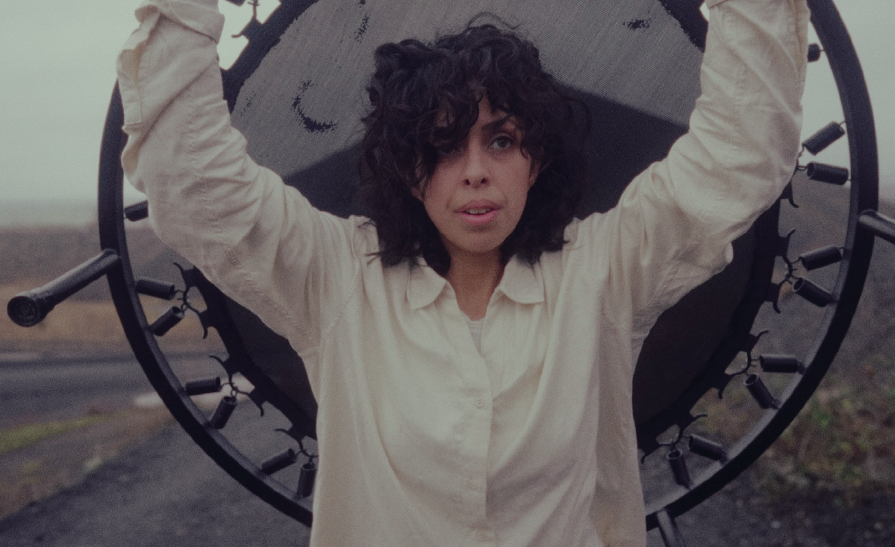
Inspired by the legend of the mountains of her childhood in Venezuela, Angyvir Padilla made several trips to the north of France in search of a “analogous” mountain. In the mining basin, she discovered the slag heaps, these strange cones made of coal extraction residues that draw singular reliefs on the horizon. The exhibition “La ola que vino de lejos” [The wave from afar] presents a video in which Angyvir Padilla climbs - in a Sisyphean way - one of these slag heaps to place a black trampoline on it. From the top, the artist launches herself towards the clouds and looks towards another slag heap, in a silent conversation with the elements. The artist reinvents a landscape based on her experience of moving; a symbolic and metaphorical work linking the imaginary immutable force of the mountain to that created at arm’s length by industrial workers.

Angyvir Padilla's (1987, Caracas – Living in Brussels) artistic practice spans a variety of disciplines and media, including sculpture, performance, photography, video and sound. These expressions can stand alone or fuse freely, in search of new vocabulary to emerge. Inspired by the experience of displacement, Padilla's works go beyond mere objects; they are narratives in constant motion, crossing the boundaries between past and present, imagined and real, ephemeral and tangible. The notion of “home” recurs in her installations - a space both familiar and uncanny, impossible to capture in a single image or phrase.
Angyvir Padilla's (1987, Caracas – Living in Brussels) artistic practice spans a variety of disciplines and media, including sculpture, performance, photography, video and sound. These expressions can stand alone or fuse freely, in search of new vocabulary to emerge. Inspired by the experience of displacement, Padilla's works go beyond mere objects; they are narratives in constant motion, crossing the boundaries between past and present, imagined and real, ephemeral and tangible. The notion of “home” recurs in her installations - a space both familiar and uncanny, impossible to capture in a single image or phrase.
Podcast, stereo, 16/9, 54’, FR
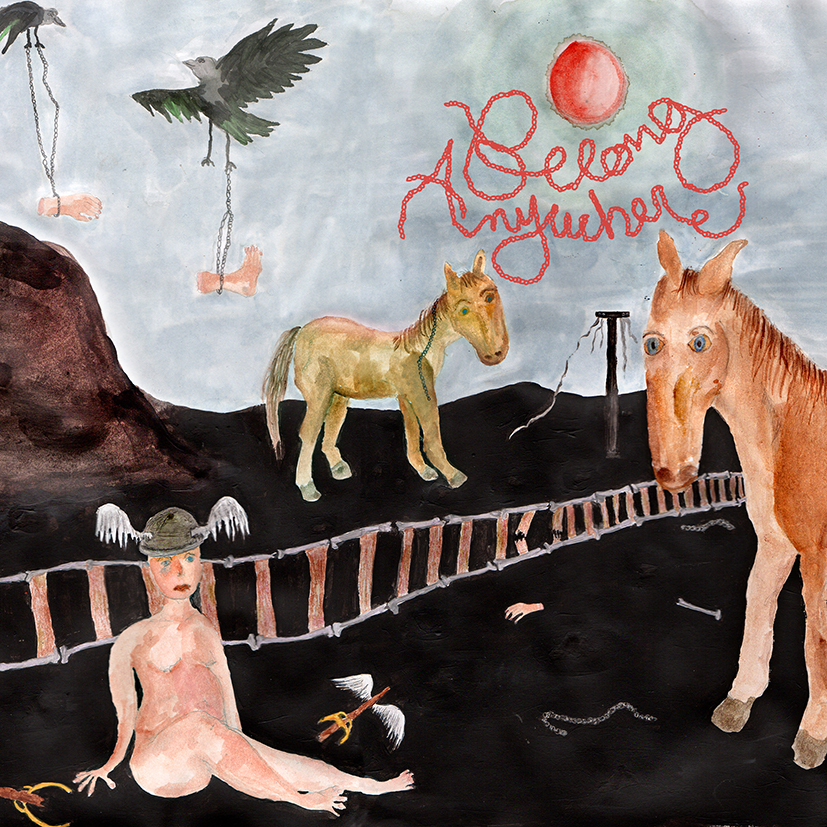
Chloé Malcotti (1989, France) lives and works in Brussels. Her artistic practice lies somewhere between visual arts and cinema. Halfway between documentary and fiction, her works reveal the gaps between official History and micro-stories, the lived realities of individuals and their transmission.
Chloé Malcotti's work captures a personal yet universal memory of displacement, integration and labor. A living archive of those who made the race for progress possible, who changed the world because “without them, there would be no space travel, no universal suffrage” .
In 1913, Belgian company Solvay established a baking soda factory in Rosignano (Tuscany, Italy), around which it transformed the landscape by building houses, a hospital, schools,
Elsewhere, starting in 1946, thousands of Italians arrived in Belgium under the “coal for labor” agreements to work in the mines located in the Liège region. Most of them lived in makeshift housing, barracks and amidst the black smoke of the steel industryTuscany born Gaby Mazzantini came to live in Seraing with her husband as part of the so-called “agreements”. She intertwines these two stories in the podcast “Belong Anywhere” realized by Chloé Malcotti.
1. ”Le Temps des ouvriers”, 2020, documentary realized by Stan Neumann.
1. ”Le Temps des ouvriers”, 2020, documentary realized by Stan Neumann.
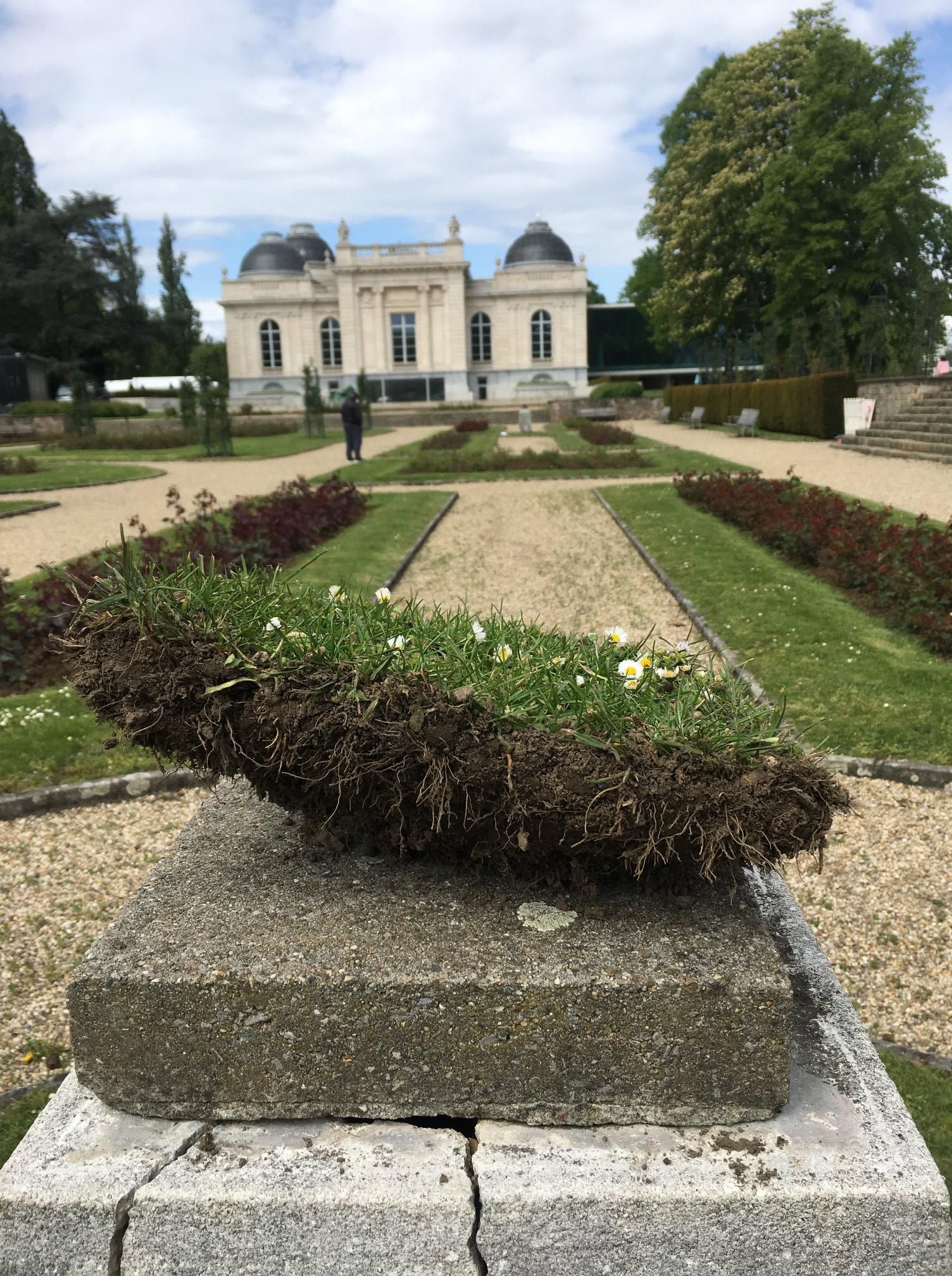
Four stone pedestals in the rose garden of the Parc de la Boverie. Four bases stripped of their original decorative vases. For the duration of an exhibition, they become pedestals, regaining their original function. The support is then transformed into a space where free and spontaneous artistic interventions are possible and accessible.
Initiated in 2016, under the impetus of Cléo Totti and Alain de Clerck, the Socles exhibition cycle evolves with the seasons, events and desires. Previous editions have featured works by Babi Avelino, Laurent Danloy, Sheila DelaCal Perez, Jonathan De Winter, Jacques Di Piazza, Pierre Gérard, Gris Gris Blanc Cassé, Benjamin Hollebecke, Laetitia Lefevre, Zoé Médard, Werner Moron, Roberta Succato, Antoine Van Impe, Denis Verkeyn, Maria Vita Goral.
Initiated in 2016, under the impetus of Cléo Totti and Alain de Clerck, the Socles exhibition cycle evolves with the seasons, events and desires. Previous editions have featured works by Babi Avelino, Laurent Danloy, Sheila DelaCal Perez, Jonathan De Winter, Jacques Di Piazza, Pierre Gérard, Gris Gris Blanc Cassé, Benjamin Hollebecke, Laetitia Lefevre, Zoé Médard, Werner Moron, Roberta Succato, Antoine Van Impe, Denis Verkeyn, Maria Vita Goral.
Performance
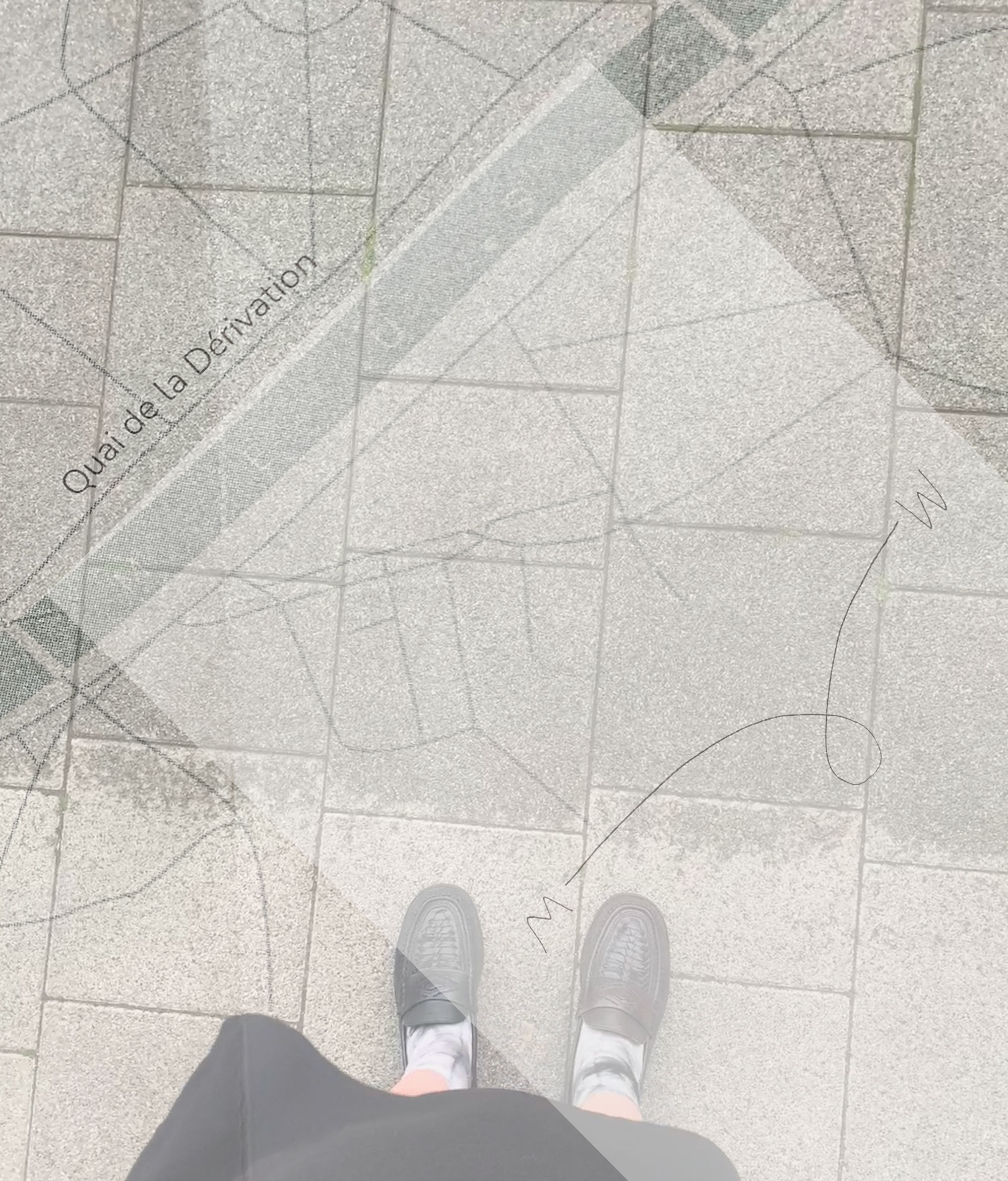
The performance “All the King’s Horses Are Riding Backwards”, lays path through the streets of Liege, with the intention of getting lost. The walk is initiated by a map that uses performative instructions (scores), that indicate other ways of moving through the city. Led by the Tourguide to Get Lost With, the performance relates to the Technique of the Dérive by the International Situationists. The scores constitute an autonomous structure, directing a walk and subverting the hegemonic spatial logics of the city and any habitual form of moving through it. This intervention invites participants to critically rethink their spatial relations and interactions within the urban fabric. How to follow a map that asks you to walk backwards?

Francisca Markus(1995, DE – Living in the Netherlands) is an artist curator living in the Netherlands. She studied at the Hochschule für Bildende Künste Hamburg, Wimbledon College of the Arts in London, and the Kunsthogskole i Oslo. She works situationally on performative installations. In her works space acts as a central element and is dealt with through different perspectives. Her practice extends across the fields of her own artistic practice, organisation, curation and mediation, as well as working with the collective Young Valley Soil. The last time she was in Liège, she got lost on several walks.
Francisca Markus(1995, DE – Living in the Netherlands) is an artist curator living in the Netherlands. She studied at the Hochschule für Bildende Künste Hamburg, Wimbledon College of the Arts in London, and the Kunsthogskole i Oslo. She works situationally on performative installations. In her works space acts as a central element and is dealt with through different perspectives. Her practice extends across the fields of her own artistic practice, organisation, curation and mediation, as well as working with the collective Young Valley Soil. The last time she was in Liège, she got lost on several walks.
Performance
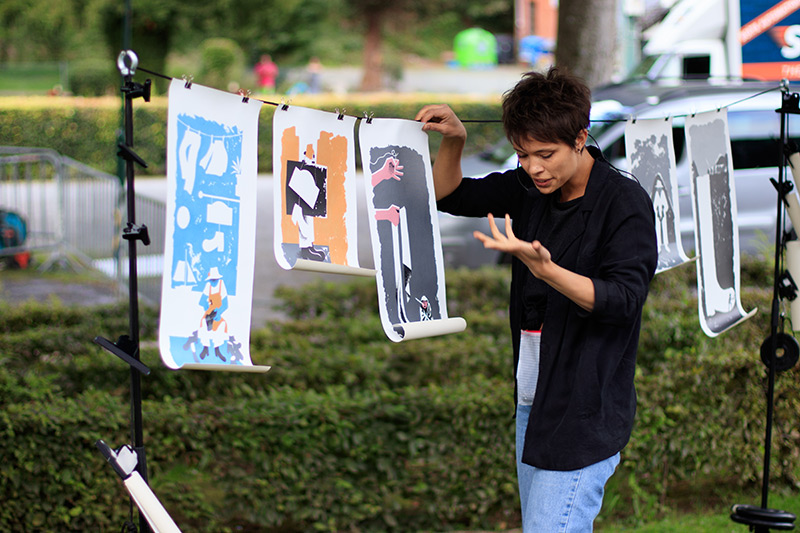
Dominique Roodthooft is inspired by the tradition of patachitras, narrative art devices sung and represented on scrolls. The patua (storytellers from West Bengal) themselves paint scrolls on which they traditionally illustrate testimonies, tales or poems. Dominique Roodthooft transposes this principle to create new stories linked to exile in the broadest sense. And if the theme echoes that of contemporary migration, singing (in the actor's native language) and drawing allow us to tackle the issue in a joyful, poetic way. Rejecting the doxa of a certain painful present to return to the foundations of existence. Exile as a vital, universal movement towards elsewhere. The chosen extract “Apolide” interpreted by Emilie Franco echoes the political and economic migration of Italians who came to Liège following the 1946 agreements, an exchange of mining resources for labor.
The performance also highlights oral tradition, to micro-histories that tend to disappear outside the realm of orality, but which have nonetheless forged “the” History in a personal, human way. A living patrimony that adds all the details needed to understand the challenges of migration, whether suffered, chosen or lived.
Emilie’s grandfather fled misery to find employment elsewhere... Many stories of exile begin in this vein. Yet, each tale is unique. Her nonno was a shoemaker in Sicily. Post-war unemployment brought him as far as Belgium where manpower was needed in the coalmines. “Occupation miner: occupation of honour”... except that beneath the ground the work is tough, and he feels so alone in this cold country in which he does not understand the language. In 1955: he flees, returns to Sicily, and encounters Marianna. It is the great love story but money is constantly in short-supply and forces him back to the mines. Seven years later: Marianna joins him. They settle in Liège, bidding Sicily adieu. Nonno will call himself “Apolide: stateless”. Forever missing his country, forever uprooted. And yet, his forced exile will also generate life: Emilie was to be born in Belgium and she would always carry his memory within her.
The performance also highlights oral tradition, to micro-histories that tend to disappear outside the realm of orality, but which have nonetheless forged “the” History in a personal, human way. A living patrimony that adds all the details needed to understand the challenges of migration, whether suffered, chosen or lived.
Emilie’s grandfather fled misery to find employment elsewhere... Many stories of exile begin in this vein. Yet, each tale is unique. Her nonno was a shoemaker in Sicily. Post-war unemployment brought him as far as Belgium where manpower was needed in the coalmines. “Occupation miner: occupation of honour”... except that beneath the ground the work is tough, and he feels so alone in this cold country in which he does not understand the language. In 1955: he flees, returns to Sicily, and encounters Marianna. It is the great love story but money is constantly in short-supply and forces him back to the mines. Seven years later: Marianna joins him. They settle in Liège, bidding Sicily adieu. Nonno will call himself “Apolide: stateless”. Forever missing his country, forever uprooted. And yet, his forced exile will also generate life: Emilie was to be born in Belgium and she would always carry his memory within her.